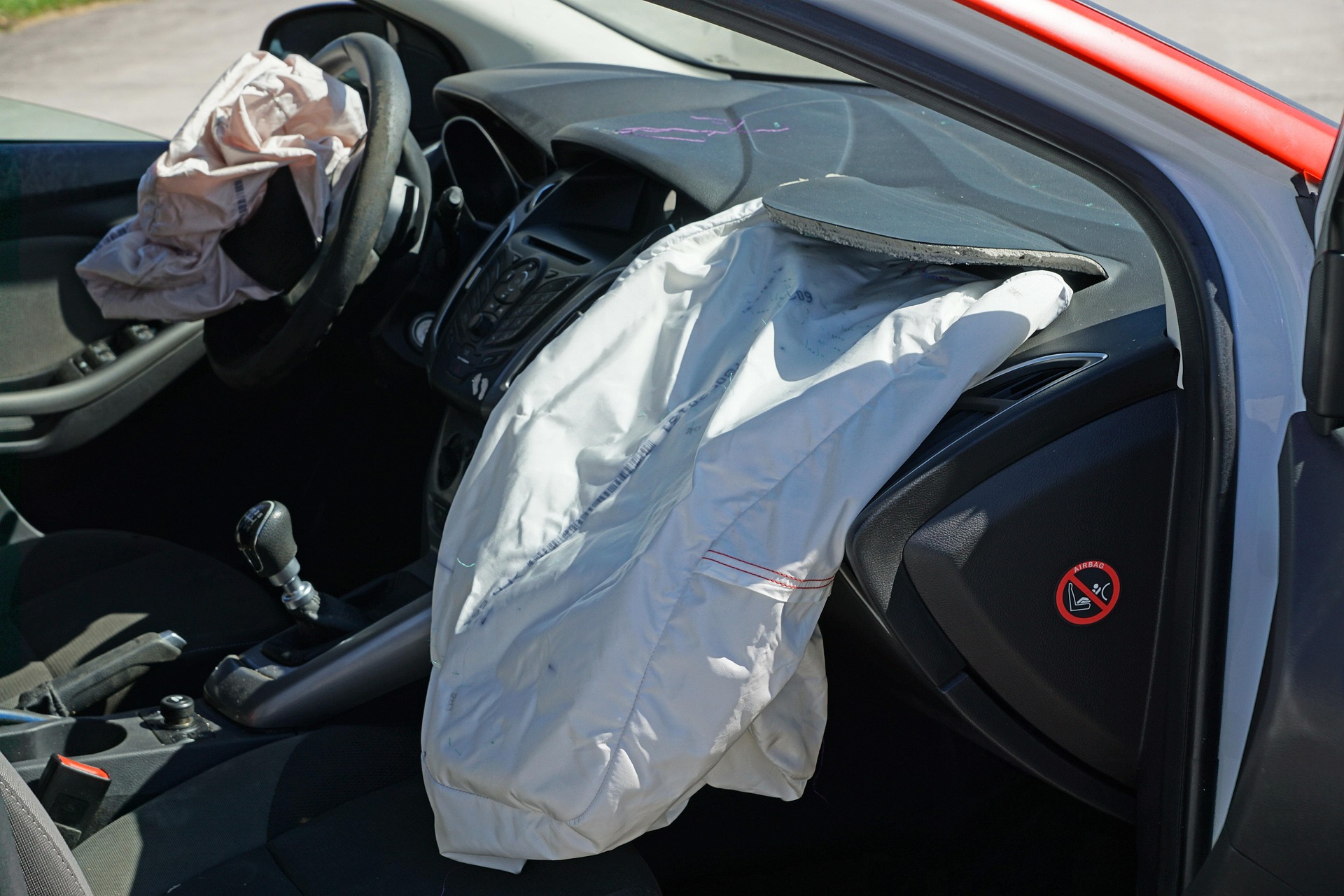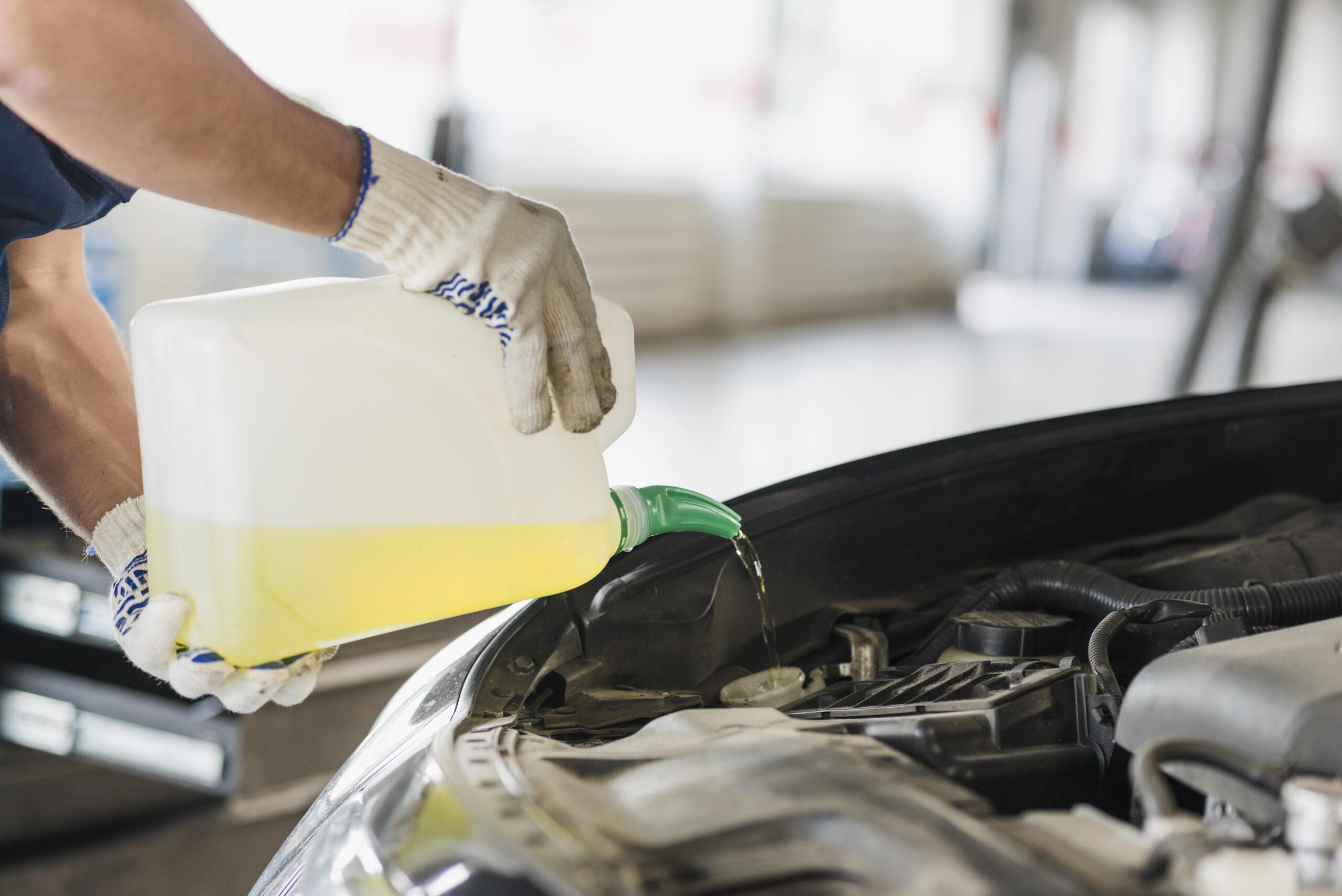In Queensland’s hot climate, with summer heatwaves, long highway drives, and stop-start city traffic in Brisbane, your car’s fluids work extra hard to keep everything running smoothly. Whether it’s engine oil keeping things lubricated, coolant stopping your engine from overheating, or brake fluid keeping you safe on the road, these fluids are the hidden heroes of your vehicle.
Fluids don’t just stop parts from wearing out. They also help your car change gears, cool down the engine, and even stop when you press the brake pedal. Each one is designed for a specific job, and if you ignore them, you could be facing expensive repairs.
Here’s a simple guide to the key fluids in your car, why they’re all different, when you should have them changed, and the warning signs that tell you it’s time.
Engine Oil
What it does:
Engine oil is like your car’s lifeblood. It keeps the moving parts of your engine slippery so they don’t grind together, helps carry heat away, and even cleans out tiny bits of dirt from inside the engine.
Why it’s special:
It’s built to handle extreme heat and pressure, as well as the dirt and fuel by-products created every time you drive.
When to change it:
Usually every 10,000–15,000 km, or sooner if you do a lot of short trips, towing, or stop-start driving.
Warning signs:
- Oil light glowing on the dashboard
- Knocking or ticking noises from the engine
- Dark, thick, or gritty oil on the dipstick
- Burning oil smell
Manual Transmission Oil
What it does:
If your car has a manual gearbox, it uses a thick oil to lubricate the gears inside. This makes gear changes smoother and stops the teeth of the gears from wearing out.
Why it’s special:
It’s heavier than engine oil because it has to cope with constant pressure between metal gears.
When to change it:
Every 60,000–100,000 km is typical.
Warning signs:
- Hard or notchy gear changes
- Whining or grinding noises while driving
- Oil leaks from the gearbox area
Automatic Transmission Fluid (ATF)
What it does:
In an automatic car, this fluid does double duty. It lubricates the gears and also acts as hydraulic fluid to make the gear shifts happen. It even helps cool the transmission.
Why it’s special:
It’s thinner than manual oil and full of additives for smooth shifting and heat protection. Each type of transmission needs its own specific ATF.
When to change it:
Every 60,000–100,000 km, or sooner if it looks or smells burnt.
Warning signs:
- Delayed or jerky gear changes
- Transmission slipping out of gear
- A burning smell
- Dark or dirty-looking ATF on the dipstick
Differential and Transfer Case Oil
What it does:
These fluids keep the gears in your differential (and transfer case, if you have 4WD/AWD) lubricated. They help transfer power to your wheels smoothly and reliably.
Why it’s special:
It’s thick, high-pressure oil that protects gears under heavy load. Some differentials need special friction-modified oils.
When to change it:
Every 40,000–100,000 km, more often if towing or off-road driving.
Warning signs:
- Whining, clunking, or humming noises from underneath the car
- Difficulty turning smoothly
- Leaks near the axle or diff housing
Power Steering Fluid
What it does:
This fluid makes steering lighter by providing hydraulic pressure, while also lubricating the pump and steering rack.
Why it’s special:
It’s formulated to resist foaming under pressure. Some cars use ATF, while many newer cars have gone electric and don’t use fluid at all.
When to change it:
Around every 60,000–100,000 km.
Warning signs:
- Heavy or stiff steering
- Groaning or whining noise when turning the wheel
- Fluid level dropping (possible leak)
Engine Coolant
What it does:
Coolant flows through the engine and radiator to keep the temperature steady. It also prevents freezing in winter and corrosion in the cooling system.
Why it’s special:
It’s a mix of water and antifreeze with additives that transfer heat and stop rust.
When to change it:
Every 40,000–80,000 km, or sooner if it looks dirty or rusty.
Warning signs:
- Engine temperature gauge running hotter than normal
- Sweet smell from under the bonnet (leaking coolant)
- Visible coolant leaks under the car
- Low coolant warning light
Brake and Clutch Fluid
What it does:
Brake and clutch fluid transfer pressure from the pedal to the system, letting you stop or change gears.
Why it’s special:
It’s designed to handle heat and pressure, but it absorbs moisture over time, which reduces performance.
When to change it:
Every 2 years, regardless of kilometres driven.
Warning signs:
- Spongy or soft brake pedal feel
- Longer stopping distances
- Brake warning light on the dashboard
- Dark or dirty brake fluid in the reservoir
Quick-Glance Fluid Maintenance Schedule
Fluid
Typical Replacement Interval
Common Warning Signs
Engine oil
Every 10,000–15,000 km
Oil light, engine noise, dark/burnt oil
Manual transmission oil
Every 60,000–100,000 km
Hard shifts, whining/grinding noises
Automatic transmission fluid
Every 60,000–100,000 km
Jerky shifts, slipping gears, burnt smell
Differential/transfer case oil
Every 40,000–100,000 km
Whining or clunking noises, leaks
Power steering fluid
Every 60,000–100,000 km
Heavy steering, whining noises
Engine coolant
Every 40,000–80,000 km
Overheating, coolant leaks, sweet smell
Brake & clutch fluid
Every 2 years
Spongy brakes, longer stopping distance
Final Thoughts
Looking after your car’s fluids is one of the easiest ways to extend its life and avoid big repair bills. Each fluid is carefully designed for its job, and ignoring them can lead to serious problems down the road.
Think of fluid changes like a health check for your car: quick, relatively cheap, and essential for long-term reliability. If you’re not sure when yours were last changed, ask your mechanic to check — it could save you a lot of trouble later on.
In Queensland’s hot climate, with summer heatwaves, long highway drives, and stop-start city traffic in Brisbane, your car’s fluids work extra hard to keep everything running smoothly. Whether it’s engine oil keeping things lubricated, coolant stopping your engine from overheating, or brake fluid keeping you safe on the road, these fluids are the hidden heroes of your vehicle.
Fluids don’t just stop parts from wearing out. They also help your car change gears, cool down the engine, and even stop when you press the brake pedal. Each one is designed for a specific job, and if you ignore them, you could be facing expensive repairs.
Here’s a simple guide to the key fluids in your car, why they’re all different, when you should have them changed, and the warning signs that tell you it’s time.
Engine Oil
What it does:
Engine oil is like your car’s lifeblood. It keeps the moving parts of your engine slippery so they don’t grind together, helps carry heat away, and even cleans out tiny bits of dirt from inside the engine.
Why it’s special:
It’s built to handle extreme heat and pressure, as well as the dirt and fuel by-products created every time you drive.
When to change it:
Usually every 10,000–15,000 km, or sooner if you do a lot of short trips, towing, or stop-start driving.
Warning signs:
- Oil light glowing on the dashboard
- Knocking or ticking noises from the engine
- Dark, thick, or gritty oil on the dipstick
- Burning oil smell
Manual Transmission Oil
What it does:
If your car has a manual gearbox, it uses a thick oil to lubricate the gears inside. This makes gear changes smoother and stops the teeth of the gears from wearing out.
Why it’s special:
It’s heavier than engine oil because it has to cope with constant pressure between metal gears.
When to change it:
Every 60,000–100,000 km is typical.
Warning signs:
- Hard or notchy gear changes
- Whining or grinding noises while driving
- Oil leaks from the gearbox area
Automatic Transmission Fluid (ATF)
What it does:
In an automatic car, this fluid does double duty. It lubricates the gears and also acts as hydraulic fluid to make the gear shifts happen. It even helps cool the transmission.
Why it’s special:
It’s thinner than manual oil and full of additives for smooth shifting and heat protection. Each type of transmission needs its own specific ATF.
When to change it:
Every 60,000–100,000 km, or sooner if it looks or smells burnt.
Warning signs:
- Delayed or jerky gear changes
- Transmission slipping out of gear
- A burning smell
- Dark or dirty-looking ATF on the dipstick
Differential and Transfer Case Oil
What it does:
These fluids keep the gears in your differential (and transfer case, if you have 4WD/AWD) lubricated. They help transfer power to your wheels smoothly and reliably.
Why it’s special:
It’s thick, high-pressure oil that protects gears under heavy load. Some differentials need special friction-modified oils.
When to change it:
Every 40,000–100,000 km, more often if towing or off-road driving.
Warning signs:
- Whining, clunking, or humming noises from underneath the car
- Difficulty turning smoothly
- Leaks near the axle or diff housing
Power Steering Fluid
What it does:
This fluid makes steering lighter by providing hydraulic pressure, while also lubricating the pump and steering rack.
Why it’s special:
It’s formulated to resist foaming under pressure. Some cars use ATF, while many newer cars have gone electric and don’t use fluid at all.
When to change it:
Around every 60,000–100,000 km.
Warning signs:
- Heavy or stiff steering
- Groaning or whining noise when turning the wheel
- Fluid level dropping (possible leak)
Engine Coolant
What it does:
Coolant flows through the engine and radiator to keep the temperature steady. It also prevents freezing in winter and corrosion in the cooling system.
Why it’s special:
It’s a mix of water and antifreeze with additives that transfer heat and stop rust.
When to change it:
Every 40,000–80,000 km, or sooner if it looks dirty or rusty.
Warning signs:
- Engine temperature gauge running hotter than normal
- Sweet smell from under the bonnet (leaking coolant)
- Visible coolant leaks under the car
- Low coolant warning light
Brake and Clutch Fluid
What it does:
Brake and clutch fluid transfer pressure from the pedal to the system, letting you stop or change gears.
Why it’s special:
It’s designed to handle heat and pressure, but it absorbs moisture over time, which reduces performance.
When to change it:
Every 2 years, regardless of kilometres driven.
Warning signs:
- Spongy or soft brake pedal feel
- Longer stopping distances
- Brake warning light on the dashboard
- Dark or dirty brake fluid in the reservoir
Quick-Glance Fluid Maintenance Schedule
|
Fluid |
Typical Replacement Interval |
Common Warning Signs |
|
Engine oil |
Every 10,000–15,000 km |
Oil light, engine noise, dark/burnt oil |
|
Manual transmission oil |
Every 60,000–100,000 km |
Hard shifts, whining/grinding noises |
|
Automatic transmission fluid |
Every 60,000–100,000 km |
Jerky shifts, slipping gears, burnt smell |
|
Differential/transfer case oil |
Every 40,000–100,000 km |
Whining or clunking noises, leaks |
|
Power steering fluid |
Every 60,000–100,000 km |
Heavy steering, whining noises |
|
Engine coolant |
Every 40,000–80,000 km |
Overheating, coolant leaks, sweet smell |
|
Brake & clutch fluid |
Every 2 years |
Spongy brakes, longer stopping distance |
Final Thoughts
Looking after your car’s fluids is one of the easiest ways to extend its life and avoid big repair bills. Each fluid is carefully designed for its job, and ignoring them can lead to serious problems down the road.
Think of fluid changes like a health check for your car: quick, relatively cheap, and essential for long-term reliability. If you’re not sure when yours were last changed, ask your mechanic to check — it could save you a lot of trouble later on.








